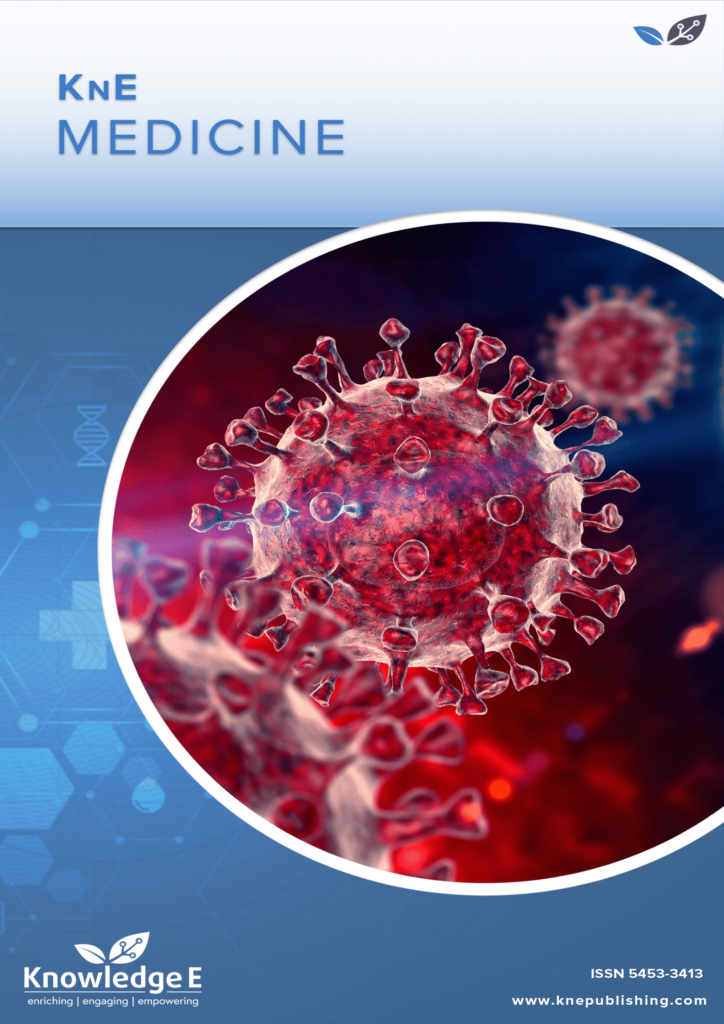
KnE Medicine
ISSN: 2519-125X
The latest conference proceedings on all fields of medicine.
Risk Factors for Anaemia in Pregnant Women who Take Iron Folic Acid Tablets in Locus Stunting Districts in Indonesia
Published date:Jun 23 2023
Journal Title: KnE Medicine
Issue title: The 3rd Health Science International Conference (HSIC)
Pages:284–294
Authors:
Abstract:
Controlling anaemia in pregnant women is carried out through iron folic acid tablets (IFA) supplementation. The IFA supplementation for pregnant women in Indonesia has been carried out for a long time, but the prevalence of anaemia among pregnant women is still high. The results from the evaluation of anaemia management of pregnant women in Locus Stunting in 2021, showed that the proportion of anaemic pregnant women is higher in pregnant women who have taken IFA. Therefore, analysis was carried out to identify risk factors for anaemia in pregnant women who had taken IFA. Data analysis was carried out descriptively, along χ2 tests and logistic regression. The proportion of anaemic pregnant women who have taken IFA was 39.8% while the proportion of pregnant women who have never consumed IFA was 33.7% (p<0.05). The results of the bi-variate analysis of risk factors for anaemia in pregnant women who consume IFA were poor families, chronic energy malnutrition, and low consumption of meat, poultry, or fish. The results of the multivariate analysis showed that the risk factors for anaemia in pregnant women were those who have low family well-being, chronic energy malnutrition, second and third trimesters gestational age and low consumption of meat, poultry and fish.
Keywords: anemia, pregnant women, iron folic acid
References:
[1] Kavle JA, Stoltzfus RJ, Witter F, Tielsch JM, Khalfan SS, Caulfield LE. Association between anaemia during pregnancy and blood loss at and after delivery among women with vaginal births in Pemba Island, Zanzibar, Tanzania. J Health Popul Nutr. 2008 Jun;26(2):232–40.
[2] Christian P, Mullany LC, Hurley KM, Katz J, Black RE. Nutrition and maternal, neonatal, and child health. Semin Perinatol. 2015 Aug;39(5):361–72.
[3] Daru J, Zamora J, Fernández-Félix BM, Vogel J, Oladapo OT, Morisaki N, et al. Risk of maternal mortality in women with severe anaemia during pregnancy and post partum: a multilevel analysis. Lancet Glob Health. 2018 May;6(5):e548–54.
[4] Gonzales GF, Tapia V, Gasco M, Carrillo CE, Fort AL. Association of hemoglobin values at booking with adverse maternal outcomes among Peruvian populations living at different altitudes. Int J Gynaecol Obstet. 2012 May;117(2):134–9.
[5] Dewey KG, Oaks BM. U-shaped curve for risk associated with maternal hemoglobin, iron status, or iron supplementation. Am J Clin Nutr. 2017 Dec;106 Suppl 6:1694S– 702S.
[6] Say L, Chou D, Gemmill A, Tunçalp Ö, Moller AB, Daniels J, et al. Global causes of maternal death: a WHO systematic analysis. Lancet Glob Health. 2014 Jun;2(6):e323– 33.
[7] World Health Organization. Benoist B, McLean E, Egli I, Cogswell Mary, ed. Worldwide prevalence of anaemia 1993-2005 : WHO global database on anaemia. Geneva: World Health Organization
[8] The World Bank. Prevalence of anemia among pregnant women (%). Indonesia; 2019.
[9] National Institute of Health Research and Development Ministry of Health of Indonesia. Indonesia Basic Health Survey (Riskesdas) 2018 Report. Jakarta; 2019.
[10] National Institute of Health Research and Development Ministry of Health of Indonesia. Indonesia Basic Health Research (Riskesdas) 2013 Report. Jakarta; 2013.
[11] Sloan NL, Jordan E, Winikoff B. Effects of iron supplementation on maternal hematologic status in pregnancy. Am J Public Health. 2002 Feb;92(2):288–93.
[12] Peña-Rosas JP, De-Regil LM, Garcia-Casal MN, Dowswell T. Daily oral iron supplementation during pregnancy. Cochrane Database Syst Rev. 2015 Jul;2015(7):CD https://doi.org/10.1002/14651858.CD004736.pub5.
[13] FAO and FHI 360. Minimum Dietary Diversity for Women: A Guide for Measurement. Rome; 2016.